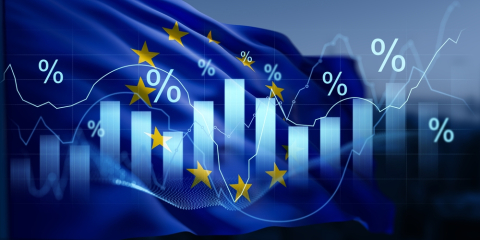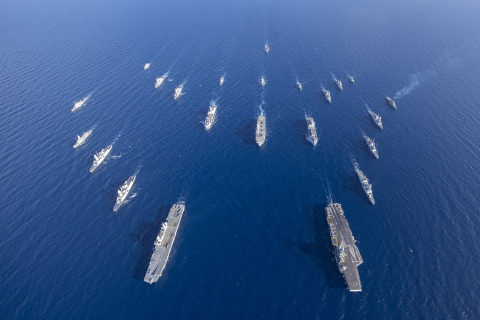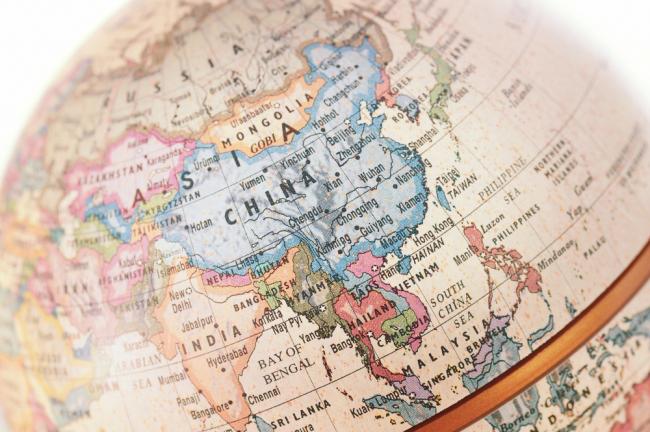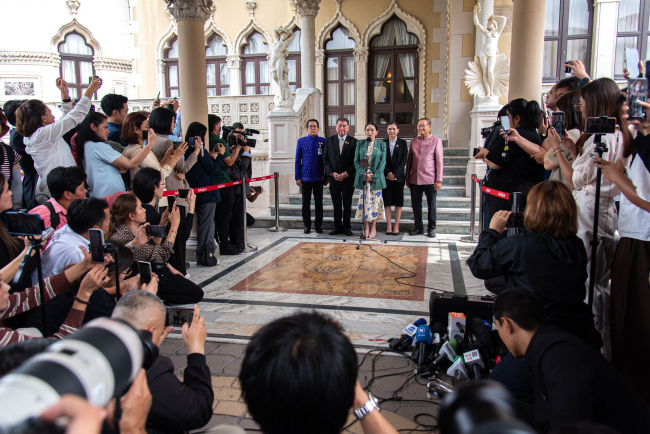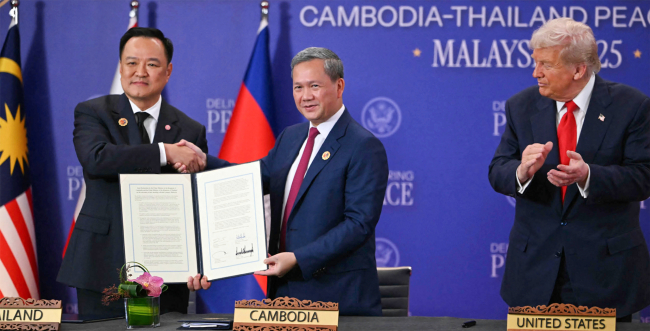EU – ASEAN : Prospects for a Free Trade Agreement
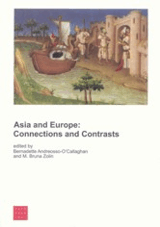
In the wake of the financial crisis of 1997-98 there has been a clear shift in a number of Southeast Asian countries towards the development of Free Trade Agreements (FTAs). ASEAN as a group has concluded FTAs with China and Korea, and it is still negotiating with Japan and India. In addition individual countries (Singapore, Malaysia, the Philippines and Thailand) have begun bilateral FTA negotiations with Japan as well as with other non –Asian partners. At the same time, major changes have affected the EU’s external economic strategy. First, the EU is getting increasingly aware of the need to revamp its economic strategy towards East Asia. Moreover, it is now widely accepted that Europe may enhance its bilateral economic arrangements in parallel to interregional as well as wider multilateral endeavors. The combination of these two moves has led to the definition of a new European trade strategy focusing on priority trading partners, with ASEAN as a potential candidate. The objective of the paper is to assess the chances for the achievement of a FTA between ASEAN and the EU. The paper starts with a brief overview of the bilateral trade and investment relations. As a next step it examines the scope for a further expansion of trade and investment relations and the potential impacts of a FTA, using the results of quantitative assessments conducted so far. A final section takes stock of existing FTAs negotiated on both sides and examines the feasibility of a bilateral FTA based on an assessment of the consistency of the two parties’ policies.

Contenu disponible en :
Régions et thématiques
Utilisation
Comment citer cette publicationPartager
Centres et programmes liés
Découvrez nos autres centres et programmes de rechercheEn savoir plus
Découvrir toutes nos analysesCrise politique en Thaïlande : la tactique du chaos
La Thaïlande a replongé à l’été 2025 dans une crise politique profonde. La suspension de la Première ministre, Paetongtarn Shinawatra, par la Cour constitutionnelle a provoqué l’implosion de la coalition au pouvoir. Cette crise ressemble pourtant aux précédentes. Une banalité répétitive qui interroge à la fois le sens des responsabilités des principaux dirigeants et qui génère au sein de la population un cynisme mâtiné de résignation.
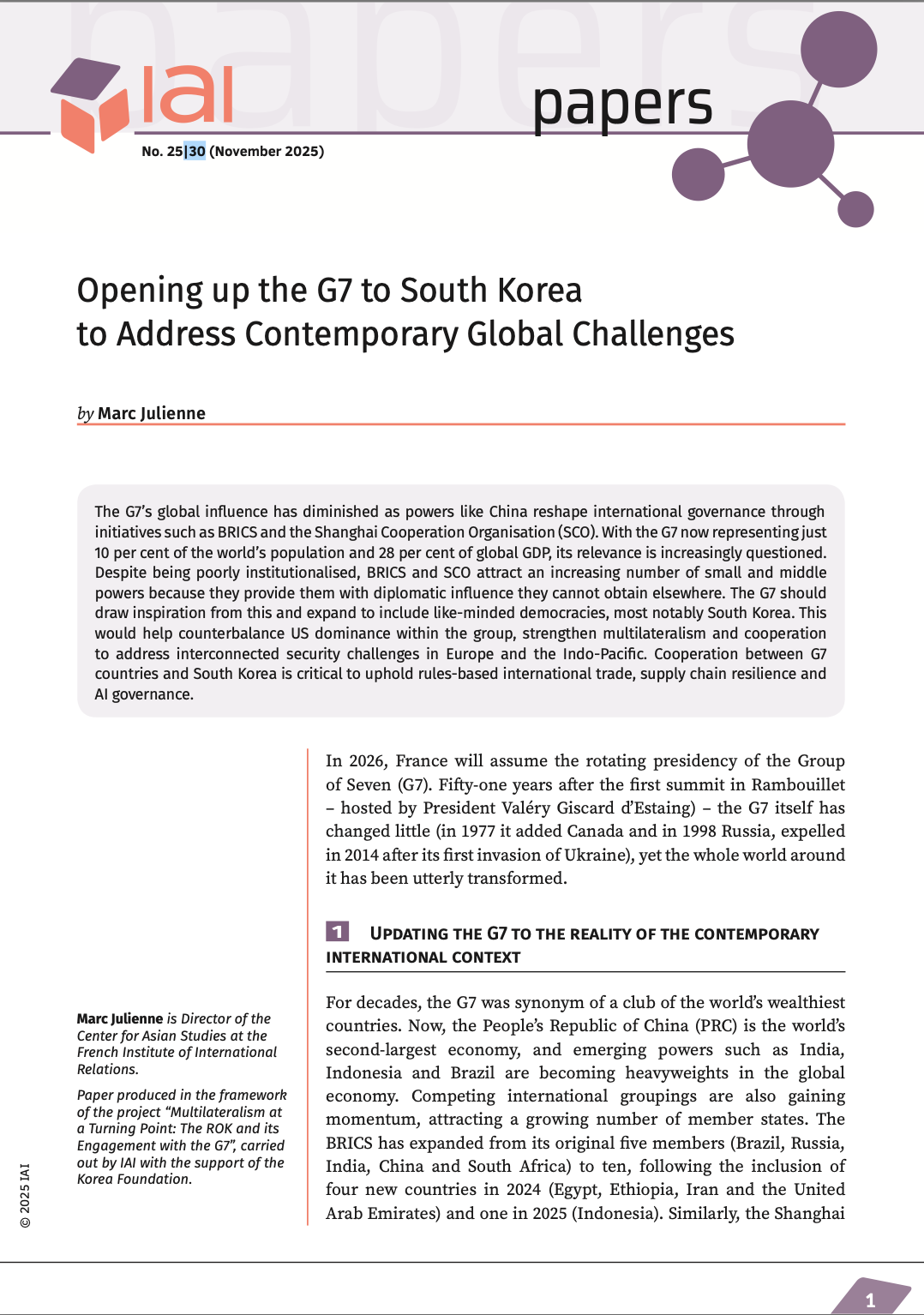
Ouverture du G7 à la Corée du Sud : relever les défis mondiaux contemporains
L'influence mondiale du G7 s'est affaiblie à mesure que des puissances telles que la Chine remodèlent la gouvernance internationale à travers des initiatives telles que les BRICS et l'Organisation de Coopération de Shanghai (OCS). Le G7 ne représentant plus aujourd'hui que 10 % de la population mondiale et 28 % du PIB mondial, sa pertinence est de plus en plus remise en question.
Cambodge-Thaïlande : un accord de paix en trompe-l’oeil
Après le Moyen-Orient, Donald Trump a vu en Asie du Sud-Est une nouvelle opportunité de consolider son image de président faiseur de paix. Confirmée à la dernière minute par la Maison-Blanche, sa participation au sommet de l’Association des Nations d’Asie du Sud-Est (ASEAN) a ainsi été conditionnée à l’organisation en grande pompe d’une cérémonie de signature d’un accord de paix entre le Cambodge et la Thaïlande.
Le rôle clé de la Chine dans les chaînes de valeur des minerais critiques
La Chine occupe aujourd’hui une position dominante dans les chaînes de valeur des minerais critiques, de l’extraction à la transformation jusqu’aux technologies en aval. Cette suprématie repose sur des décennies de politiques industrielles et lui confère une influence stratégique considérable sur la sécurité d’approvisionnement mondiale, notamment pour l’Union européenne.






